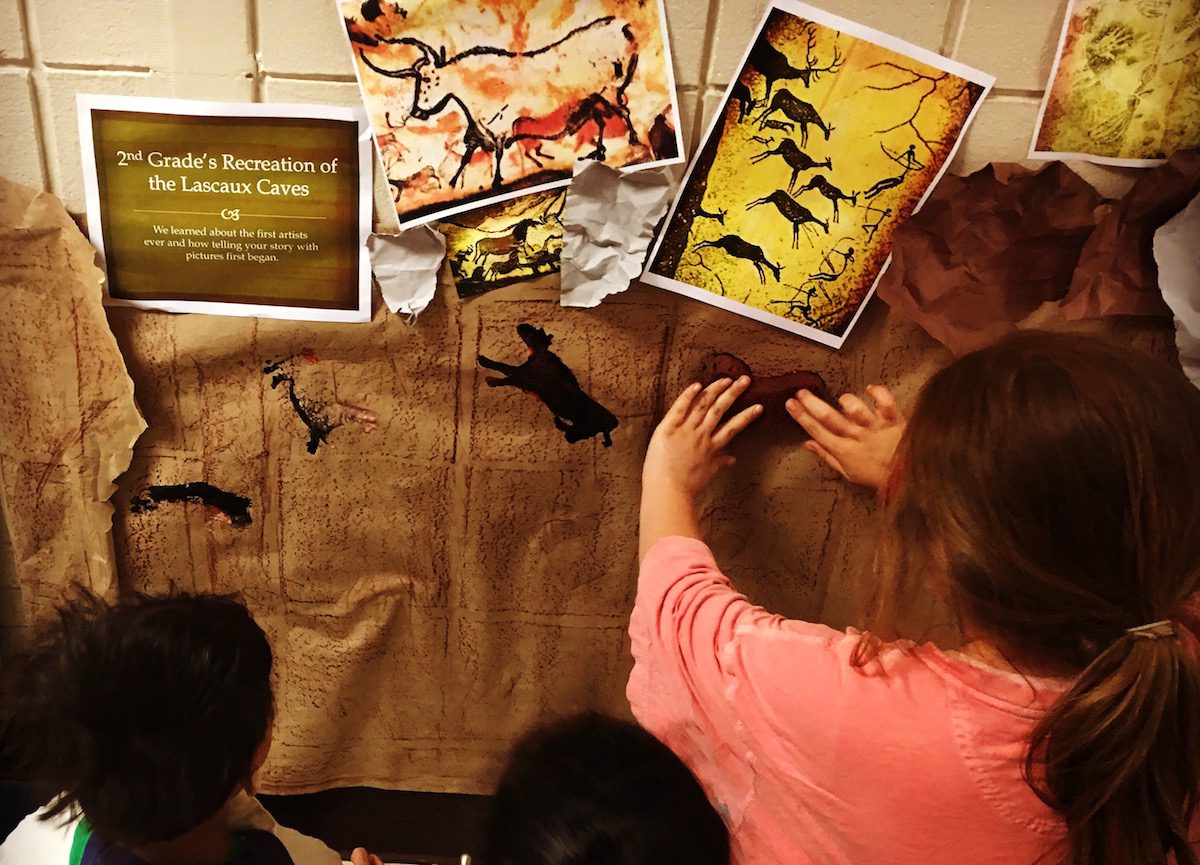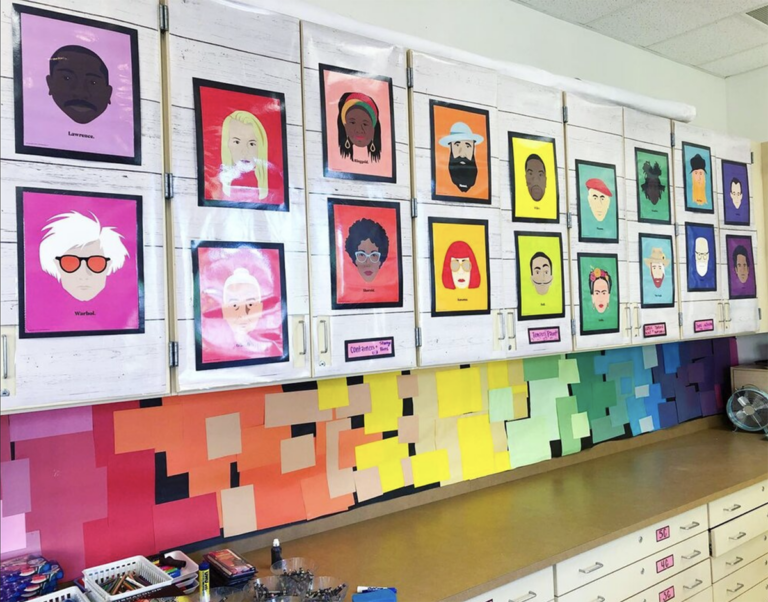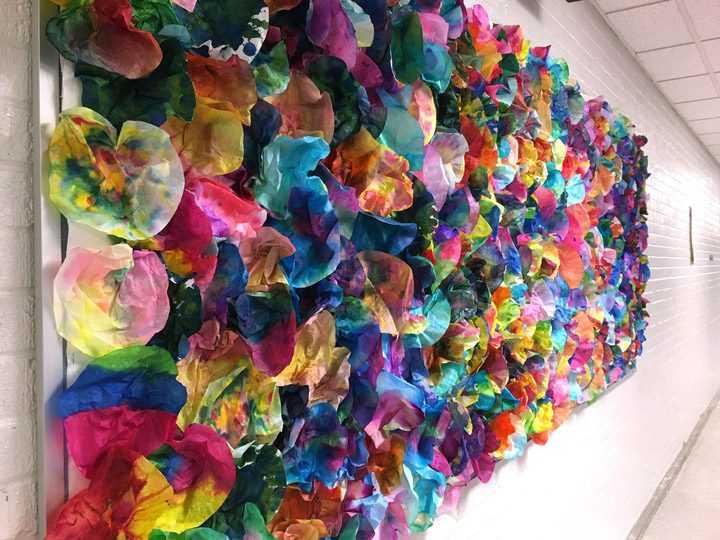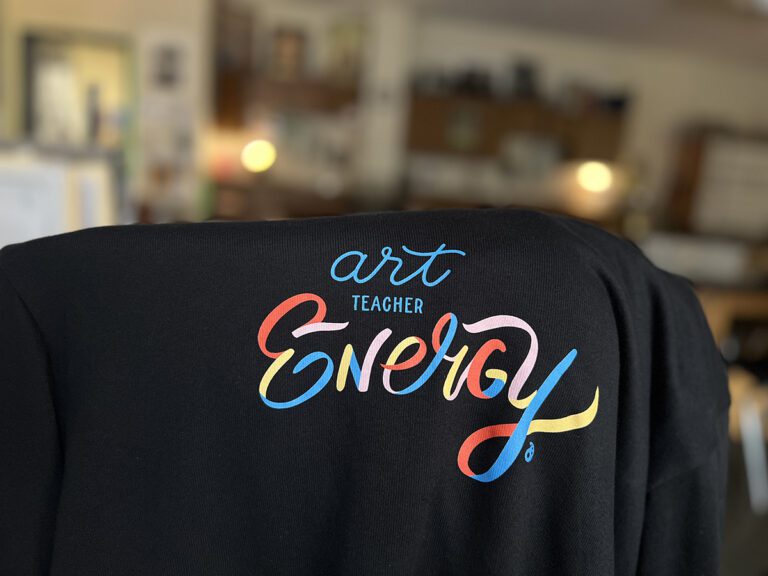We’ve all hung student work.
When we do, we make the choices about how to present it. Is that fair? Is that right? Most importantly, are we missing a HUGE opportunity to let students learn by hanging it themselves?
Here are seven reasons you should consider letting kids hang their own work.
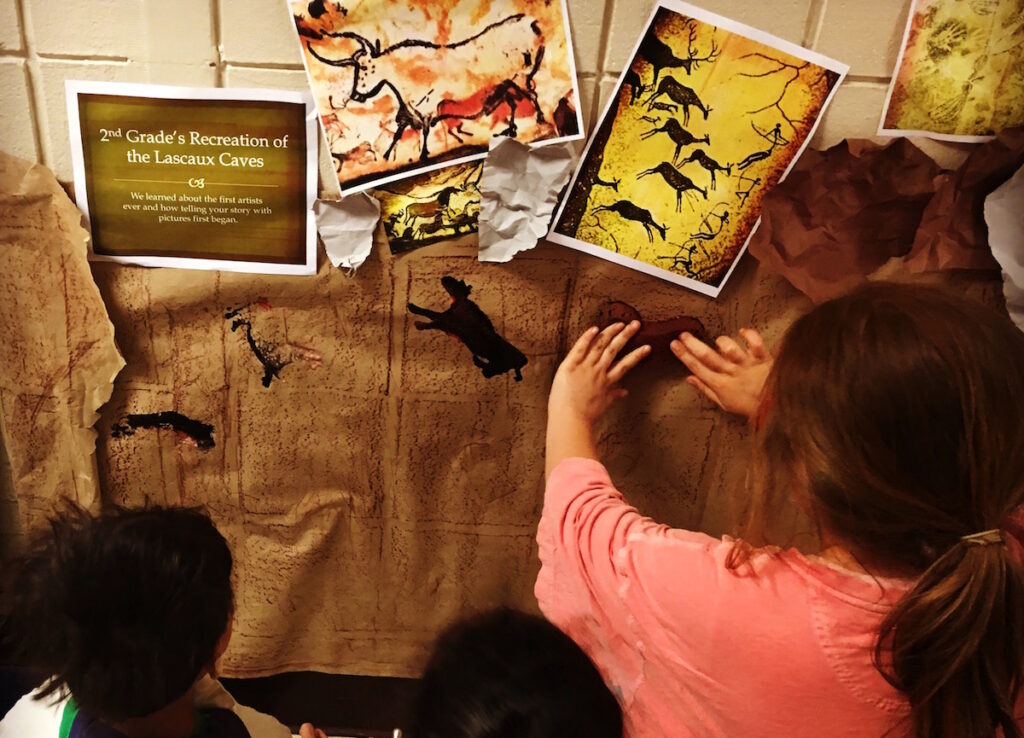
1. It encourages students to look at their peers’ work more carefully.
When deciding where to place their piece, students will select positioning only after looking at the work it will hang near. Watch as eyes glide over each piece thoughtfully considering between which their own will look best.
2. Students see their work in the context of a wider scope.
Having students hang their work allows them to reflect on their work outside of what I call the “creation bubble.” Sometimes when students are working they are deep into it and have blinders on. They don’t see or absorb what other students are making and that has both its benefits and downfalls. Hanging their own work allows them to compare and contrast their work – upon completion – against the work of their peers.
3. Students take on the role of curator.
Look at this as an opportunity for students to learn about art careers. Not every student will have an artistic voice that leads them to become a practicing artist, but some might be maestros at directing the other artistic voices in the orchestra. Curating work highlights the partnerships and working relationships vital to the business end of the art world.
4. It will save you time!
When students take on this responsibility, hanging art is one less thing you need to do. I recommend choosing a student curator, someone you trust to oversee the choices and keep everyone focused during the process.
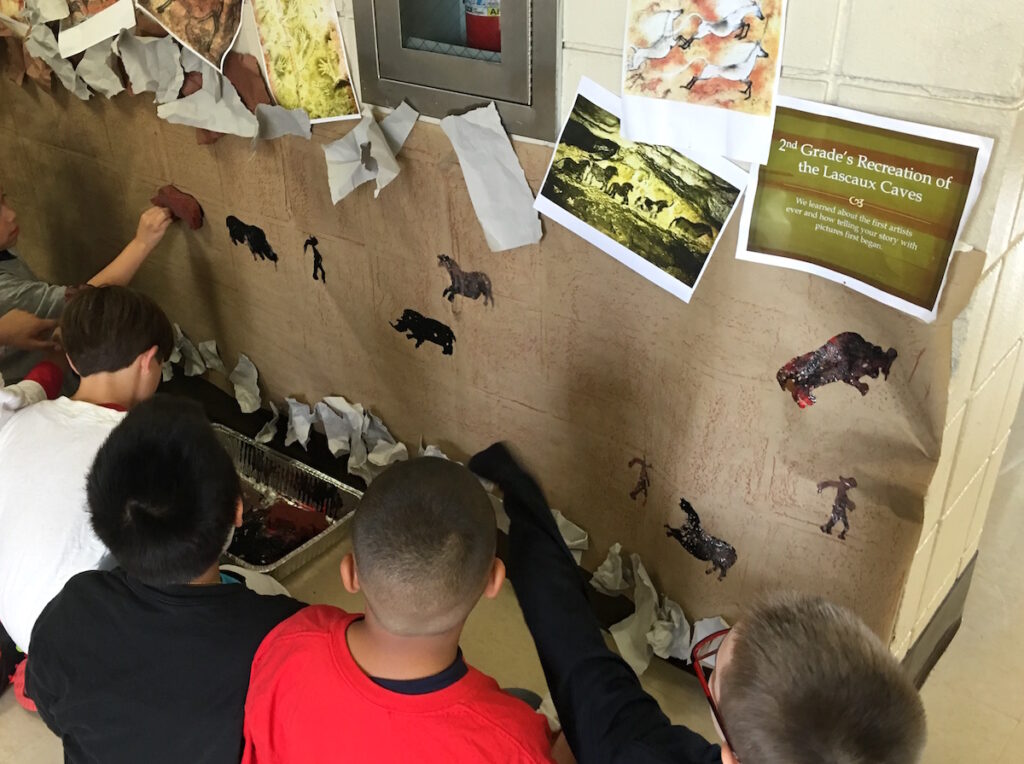
5. It gives students ownership over the value of their pieces.
Students who have not taken an assignment seriously often don’t want to hang their work. This often tells you all you need to know about their effort. Plus, it’s a signal to try harder next time. It’s a good way to remind students with lackluster motivation of the potential rewards associated with hard work.
6. You might have it wrong.
Have you ever watched a student hang a piece, only to find they hang it upside down? Or, at least that’s what you thought. In order for a student to get every opportunity to express themselves accurately, allow them to choose the orientation.
7. An artist’s decision-making process does not always end with creation.
Those famous words, “I’m done!” Don’t you long to say, “You mean, you are ready to display and present your work?” This is a chance for students to learn art making is a process and has many phases.
As a teacher, it is natural to try and tackle every task ourselves. However, some are best left to students to explore without us hovering. In my own experience, the results are often surprising and rewarding.
Do you have students hang work? Do you have any guidelines for them?
What results have come out of having students hang their own work?
Magazine articles and podcasts are opinions of professional education contributors and do not necessarily represent the position of the Art of Education University (AOEU) or its academic offerings. Contributors use terms in the way they are most often talked about in the scope of their educational experiences.
